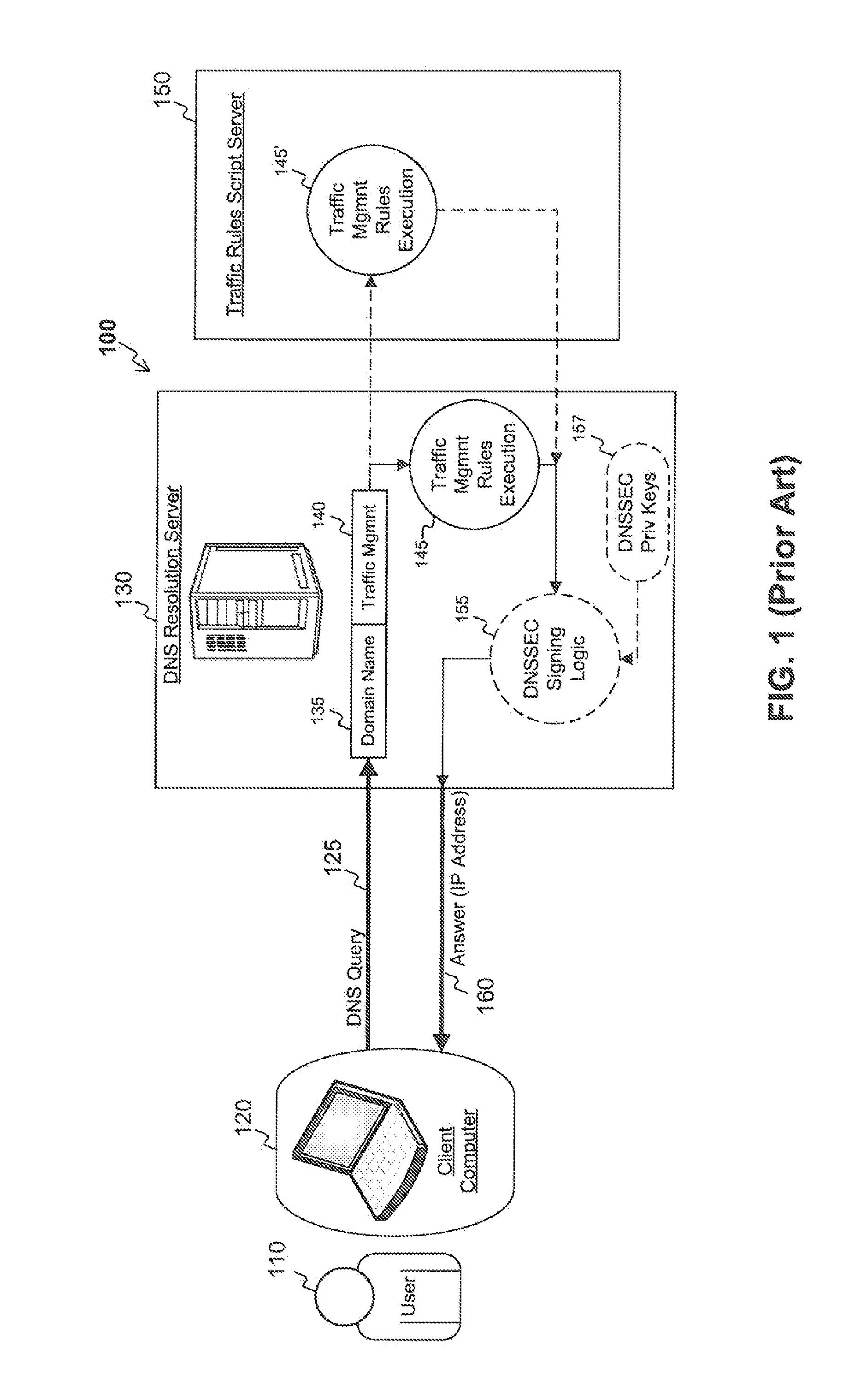High performance DNS traffic management
a traffic management and high-performance technology, applied in the field of network traffic management, can solve the problems of slow response time, time-consuming, other processing that slows down the response time to dns queries, and is also detrimental to the effect of speeding up the response tim
- Summary
- Abstract
- Description
- Claims
- Application Information
AI Technical Summary
Benefits of technology
Problems solved by technology
Method used
Image
Examples
Embodiment Construction
[0001]1. Field of the Invention
[0002]This invention relates to network traffic management, and more particularly, to providing high speed responses to DNS queries that can provide more than one answer depending on traffic management criteria.
[0003]2. Background
[0004]The Domain Name System (“DNS”) is a hierarchical naming system for devices connected to the Internet. Its primary purpose is to translate human-friendly domain names (e.g., example.com) to the Internet Protocol (“IP”) addresses used by devices connected to the Internet (e.g., 192.0.2.1). When a requestor makes a DNS request for IP address (“A” record) of a domain name (also known as a DNS query), such as when a user types in a domain name into their browser to find a specific Internet site, the DNS request is sent to a recursive DNS server, which in turn makes requests to a hierarchical system of servers until the authoritative DNS server for the domain name is located. The user's request is then sent to the authoritativ...
PUM
 Login to View More
Login to View More Abstract
Description
Claims
Application Information
 Login to View More
Login to View More - R&D
- Intellectual Property
- Life Sciences
- Materials
- Tech Scout
- Unparalleled Data Quality
- Higher Quality Content
- 60% Fewer Hallucinations
Browse by: Latest US Patents, China's latest patents, Technical Efficacy Thesaurus, Application Domain, Technology Topic, Popular Technical Reports.
© 2025 PatSnap. All rights reserved.Legal|Privacy policy|Modern Slavery Act Transparency Statement|Sitemap|About US| Contact US: help@patsnap.com



